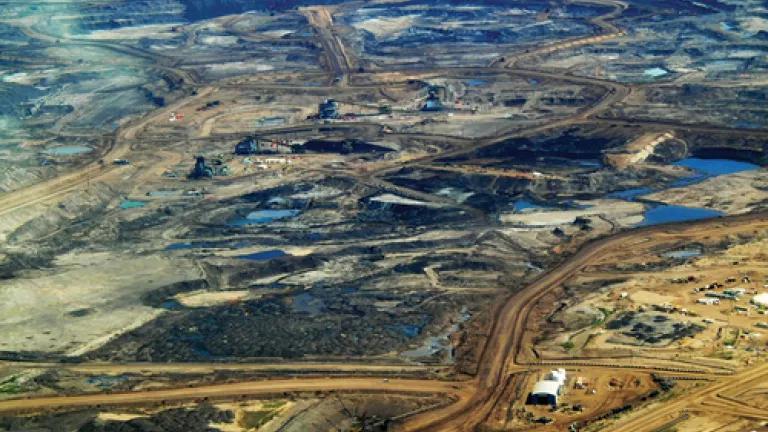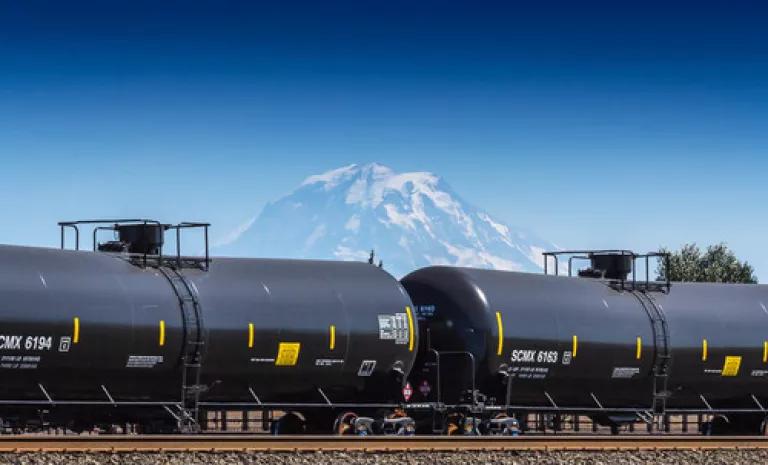
When President Barack Obama took to the podium on November 6, 2015 and wasted no time in saying "the State Department has decided that a Keystone XL Pipeline would not serve the national interest of the United States," a seven year battle that turned the tide in the global fight against climate change finally came to an end. Citing the need for America to make tough decisions in order to be a leader on confronting climate change, President Obama sent a strong signal to the world that we really can make the decisions that will allow us to begin moving away from our dependence on fossil fuels. It's a brave decision, based on the premise that we can successfully confront the threat of climate changes with actions today, that deserves praise. It is also a decision that is a big deal for the climate, as the Environmental Protection Agency made clear in its February 2015 comments to the State Department when it noted that "there is no disagreement: oil sands crude is substantially more carbon intensive than reference crudes and its use will significantly contribute to climate pollution." EPA went on to frame Keystone XL for exactly what it was: a single decision point that would be one "of many decisions that will steadily turn the tide on climate change."
In Secretary Kerry's press release summarizing the State Department's reasons for finding Keystone XL to not be in America's national interest, he noted the problem of tar sands emissions when he made the following observation:
While it would facilitate the transportation to the United States of one of the dirtiest sources of fuel on the planet, the proposed project by itself is unlikely to significantly impact the level of crude extraction or the continued demand for heavy crude oil at refineries in the United States.
While he nailed that tar sands are a problem because of their extremely high emissions, the latter part of this statement requires some further reflection. The assumption that tar sands will be extracted--the "inevitability argument" as some like to call it--is the premise that individual decisions about infrastructure like Keystone XL will not have any significant impact on production levels in the tar sands. As many observers have noted, including the State Department itself, this assumption is based on a world where tar sands oil is selling for at least $75 per barrel. The problem is that tar sands have been selling far under that benchmark for more than a year. In its Executive Summary for the Keystone XL Final Supplemental Environmental Impact Statement (FSEIS), State observed that:
"[o]il sands production is expected to be most sensitive to increased transport costs in a range of prices around $65 to $75 per barrel . . . [and] [p]rices below this range would challenge the supply costs of many projects, regardless of pipeline constraints, but higher transport costs could further curtail production."
This week, a barrel of Western Canadian Select, the benchmark tar sands crude, was trading for $30/barrel, less than half the price of the State Department's low-end projection. With prices hovering near this level for months, at least 40 tar sands expansion projects, totaling 1.7 million bpd of production potential have been cancelled, delayed, or put on indefinite hold. In the days leading up to the Keystone XL rejection, Shell's 80,000 bpd Carmon Creek in situ project was suspended, despite the fact that construction had already begun.
What's more, as Keystone XL remained wrapped up in the regulatory process, the switch to rail that so many warned about and that State cited as a strong likelihood, simply didn't occur. In 2014, only 10% of the crude oil traveling through the U.S. came from Canada. In 2015, as oil prices fell and stayed low, that number has been on the decline. Further, the Gulf Coast refining market, the destination of the tar sands Keystone XL would have carried, is receiving less than 50% of the Canadian oil passing through the U.S. by rail. In other words, the connection between Keystone XL and crude-by-rail doesn't exist and the reason for that is clear. First, the crude-by-rail boom plaguing U.S. communities today is being driven by U.S. producers who prefer the flexibility or rail and have refused to support a number of new pipelines proposed for the U.S. Keystone XL would have had no impact on this traffic, as nearly all of its capacity was reserved for Alberta producers. Second, crude-by-rail is really expensive, especially from Northern Alberta to Gulf Coast Markets. In fact, in a low oil price environment, moving tar sands by rail to any market except the Pacific Northwest (which lacks the infrastructure to receive a Keystone XL-sized shipment of tar sands) is not economic for the struggling industry.

Interestingly, in the Record of Decision supporting its finding that Keystone XL was not in the national interest, one begins to see that the State Department had begun to notice that tar sands expansion is not inevitable. Suggesting that further expansion may not come to pass, State wrote:
Uncertainties about the future growth of oil sands production remain. Oil prices are volatile, particularly over the short term, and long-term trends that drive the investment decisions of oil-sands producers are difficult to predict. Since production remains uncertain post 2018, the corresponding amount of transportation infrastructure required also remains uncertain.
A recent report published by Oil Change International underscores this point. According to OCI's analysis, the North American pipeline system carrying tar sands is 89% full today, and is expected to reach capacity by 2017. After that point, Alberta's tar sands industry will need new or expanded pipelines if it wishes to continue growing anywhere near its current rate. While industry supporters would point to several pipeline proposals on deck in Canada as proof that help is on its way, these proposals are sharing the same amount of public opposition and scrutiny that Keystone XL found in the U.S. Indeed, Canada new Prime Minister Justin Trudeau has promised major environmental reforms that could suspend the contentious regulatory review of those projects, leading to lengthy delays and ever-higher likelihoods that they will never be built.
Keystone XL mattered deeply to the tar sands industry. When former Prime Minister Steven Harper committed $24 million to a public ad campaign targeting the U.S., that reality couldn't have been made clearer. Today's announcement will slow the growth of the tar sands by creating a major transport barrier that cannot be overcome with rail or another project waiting in the wings.

